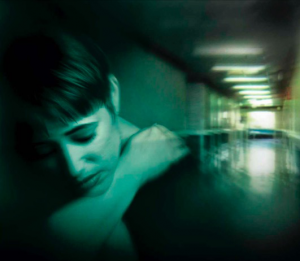From the Citizens Commission on Human Rights Victoria.
THE VICTORIAN MENTAL HEALTH ACT IS UNDER REVIEW
Under Victoria’s Prevention of Cruelty to Animals Act, someone committing an act of cruelty on any animal that wounds, mutilates, abuses, worries, torments, or terrifies the animal, can be fined up to $45,435 or imprisoned for up to 12 months. If the cruelty results in death or serious disablement of an animal, an offender can be fined up to $90,870 or imprisoned for up to 2 years.
Yet in stark contrast, mistreatment of psychiatric patients continues without any criminal penalty for the perpetrator under the Victorian Mental Health Act. How is this lack of protection of patients in the law even possible?
In June 2021, The World Health Organization (WHO) released guidelines that lashed out against coercive psychiatric practices, that it says “are pervasive and are increasingly used in services in countries around the world, despite the lack of evidence that they offer any benefits, and the significant evidence that they lead to physical and psychological harm and even death.” It points to the United Nations Convention on the Rights of Persons with Disabilities (CRPD) which in essence, calls for a ban on “forced hospitalization and forced treatment.”
The WHO report highlights the fact that coercive practices occur because “they are mandated in the national [or state] laws of countries.” Coercive psychiatric practices continue to be rife in Victoria and now is the time to take effective action and ban coercive practices in Victoria.
THE PUBLIC WILL NOT EVEN SEE OR BE ABLE TO PROVIDE INPUT ON THE DRAFT LAW BEFORE IT GOES TO THE VICTORIAN PARLIAMENT TO BE PASSED INTO LAW.
There is no evidence that the banning of coercive practices is set to immediately change. Now is the first and only proposed time for the public to provide feedback. The public must be able to provide feedback on the Draft Bill before it goes to Parliament as it removes parental and patient rights.
ELECTROSHOCK OF CHILDREN (ECT): It is appalling that the current Victorian law allows for children, pregnant women and the elderly to be electroshocked. ECT is the application of hundreds of volts of electricity to the head to induce a grand mal seizure (convulsion). It can cause brain damage, permanent memory loss, cardiovascular complications, stroke and even death.
Sixteen years ago, the World Health Organisation stated, “There are no indications for the use of ECT on minors, and hence this should be prohibited through legislation.”
W.A. bans electroshock on children under the age of 14 and the A.C.T ban its use for children under 12.
Despite this, the current Victorian Mental Health Act allows children under 18, who psychiatry considers have the “capacity to give informed consent,” to be able to consent to electroshock. Parental approval is not needed at any stage including when it goes before the Mental Health Tribunal for final approval. Electroshock can also be given to involuntarily detained children, again no parental consent is needed.
So torturous is ECT that one Australian woman forced to undergo electroshock against her will, close to 100 times, said she has had security guards wheel her down to the treatment room holding her down so she didn’t escape. “I felt like I was being wheeled down to the gas chamber really,” she said. She would even eat from stashed food to avoid the general anaesthetic and when staff found her food, she resorted to eating grass to avoid the electroshock.
Australian grandfather Gerard Helliar was administered over 200 electroshocks. In 2018, Victorian coroner Mr. White said there was no evidence that the involuntary ECT Mr. Helliar endured could have provided him with any relief, and ECT instead imposed further pain, discomfort, stress and a sense of hopelessness.
- There were 13 Victorian children aged 13-17 years electroshocked between 2014/15 and 2019/20 per the Chief Psychiatrist.
- Medicare report that in 2018, there were 156 electroshock “treatments” given to Victorian youth aged 15-19 years old.
- In 2019/20 there were 12,073 electroshocks given to Victorians.
- Elderly women aged 70-79 were given more electroshock in Victoria than any other age group (1,528) and there were also 959 electroshocks in Victoria given to elderly over 80 years of age in 2019/2020.13
The United Nations Special Rapporteur on torture and other cruel, inhuman or degrading treatment or punishment reported to the United Nations on abuse in health care settings, he called upon all States to,
“…Impose an absolute ban on all forced and non-consensual medical interventions against persons with disabilities, including the non-consensual administration of psychosurgery, electroshock and mind-altering drugs such as neuroleptics [antipsychotics] for both long-and short-term application.”
Any claim that ECT does not cause brain damage ignores basic electrical science. When electricity is sent through the brain, it is converted into heat, increasing the brain’s temperature. Cells can suffer dysfunction, temporary injury, permanent damage or even cell death, according to Dr. Ken Castleman, Ph.D., biomedical engineer who has provided legal testimony in ECT device litigation.
Victoria’s former Deputy Chief Psychiatrist Professor Kuruvilla George, wrote in an article on ECT, “How does ECT work? This is the million-dollar question and the first thing to state is that no one is certain.”
Imagine a heart surgeon claiming he doesn’t know how the heart works but has dozens of theories—and no scientific fact—about why a coronary bypass operation should be performed. He would be sued for malpractice.
Recommendation: Electroshock must be banned for all ages with criminal fines and prison terms in violation of this ban. [Victorian Mental Health Act 2014, (VMHA) s90, s92(2), s94(1)(a)(b), s94(2)(a)(b)(i)(ii), s94(3)(e), s68(1)(a)(b)(c)(d), s68(2)(c)]
RESTRAINT AND SECLUSION OF CHILDREN: Restraint is a coercive brutal practice that is currently legal for all ages in Victoria, including children, pregnant women and the elderly in the current Mental Health Act.
Restraint can be:
- Physical restraint: being held down by another person (often used to force “treatment” on the person).
- Mechanical restraint: the use of devices such as belts or straps, often used to tie the person to a bed or chair.
- Chemical restraint: the use of psychiatric drugs to subdue or control. This is the most common form of restraint.
Restraint can and does cause death. Former Austin Hospital Director of Mental Health Dr Richard Newton said he would estimate one death each year in Victoria in circumstances involving restraint, forced sedation and seclusion.
A report by the United Nations Special Rapporteur on Torture and Other Cruel, Inhuman or Degrading Treatment or Punishment, presented to the United Nations Human Rights Council in Geneva on March 4, 2013, stated,
“…there can be no therapeutic justification for the use of solitary confinement and prolonged restraint of persons with disabilities in psychiatric institutions; both prolonged seclusion and restraint constitute torture and ill-treatment.”
In Victoria in 2019/20 there were:
- 170 episodes of bodily restraint (mechanical and physical) on children aged 0-12 and a further 632 restraint episodes on children aged 13-17.
- Victoria had the highest rate in Australia of both physical and mechanical restraint in public acute psychiatric facilities.
- There were also 3,572 episodes of seclusion, 234 of these for children aged 0-17.
- 726 of these seclusions were between 4-12 hours and a staggering 996 seclusions were longer than 12 hours.
Instead of banning restraint and seclusion immediately, it is proposed that they are “phased out” within 10 years in Victoria. As far back as 2009, a National Mental Health Consumer and Carer Forum’s report, stated that involuntary seclusion and restraint “are commonly associated with human rights abuse,” “are not evidence-based therapeutic interventions,” “cause short term and long-term emotional damage to consumers” and should be “eradicated from use in Australia’s mental health services.”
Fast forward to 2021, and restraint and seclusion are still legal in the Victorian Mental Health Act.
Recommendation: Restraint is criminal, all forms of restraint must be banned immediately, not just “phased out over 10 years.” Criminal fines and prison terms for violation of the ban are also needed.
SEXUAL CONTACT: A 2013 report by the Victorian Mental Illness Awareness Council found 45% of the women surveyed who had been in Victorian psychiatric hospitals had been sexually assaulted. 82% of those who reported a sexual assault were not helped by nurses. The study also found more than 67% had been sexually harassed and 85% reported feeling unsafe in a psychiatric hospital. In December 2017, Victoria’s chief psychiatrist conceded that the number of serious incidents that land on his desk continues to rise. In the WA Mental Health Act, there is a $6,000 criminal fine for failing to report unlawful sexual contact with a patient by staff. In contrast, there is no mandatory reporting of sexual assault in the Victorian Mental Health Act.
An Australian analysis of nearly 8,000 complaints made to regulators published in 2019, found:
“Mental health practitioners [psychiatrists and psychologists] had a complaint rate that was more than twice that of physical health practitioners. Their risk of complaints was especially high in relation to reports they wrote, records, confidentiality, interpersonal behaviour and sexual boundary breaches.”
Recommendation: In no other area of the community would any form of sexual abuse be tolerated. Reporting to police of sexual contact by mental health staff on a patient must be made mandatory and failure to report must carry criminal penalties in the Victorian Mental Health Act.
CHILDREN CAN BE INVOLUNTARY DETAINED AND TREATED WITHOUT PARENTAL CONSENT:
Involuntary commitment is when a child or adult is locked up in a psychiatric hospital, forcibly treated without the consent of their parents or patient. Parental consent is not required for any treatment including psychiatric drugs, electroshock, restraint and seclusion. There are also legal orders that require someone to take psychiatric drugs or treatment by law at home, again no consent is required. Parents and adults can request a Mental Health Review Tribunal Hearing to be released, but there is no guarantee the child or adult will be allowed to go home. And while the parents or patient are waiting for the Tribunal Hearing, forced “treatment” continues.
In 2019-2020 there were:
- 6,226 involuntary commitment/treatment orders made and only 531 orders were cancelled.
- The Mental Health Tribunal state, “legal representation at the Tribunal is not an automatic right and it is the responsibility of patients to arrange their own representation.
- There were 8,786 hearings held in 2019/20, with legal representatives for patients at 1,157 of these hearings.
- More than 67% of people who were detained in a psychiatric facility, were detained for longer than 26 weeks.
In SA, anyone who has a Mental Health Tribunal Hearing regarding a request to end involuntary detainment or forced treatment in the community or to appeal to a higher tribunal has the right to choose their own lawyer and it is paid for by the State government.
Victorians do not get this same basic right.
Victorian, Lucy Barker, had significant trauma from forced treatment. She said the measures taken were extreme and stated, “You wouldn’t treat anyone else that way, but because you are perceived to have a mental illness, you can be restrained to a bed for hours or thrown in a seclusion room or chucked in the back of a divvy van or jabbed in the butt, and then knocked unconscious for a day.”
There is talk about improving involuntary commitment in the new law. The late Dr. Thomas Szasz, professor of psychiatry, and co-founder of CCHR, was forthright in stating:
“Involuntary mental hospitalization is like slavery. Refining the standards for commitment is like prettifying the slave plantations. The problem is not how to improve commitment, but how to abolish it.”
Recommendation: Only a judge or magistrate should have the right to detain someone and only with full legal representation for the person facing deprivation of liberty, paid for by the State.
PSYCHOSURGERY: All forms of psychosurgery are correctly banned in NSW and the NT for all age groups and the forms involving burning or cutting the brain are banned in QLD for all ages. It is banned in SA and WA for under 16’s.
There are no bans in Victoria.
Psychosurgery can also involve electrodes being inserted into the brain sending an electrical current through it, as in the case of deep brain stimulation (DBS). It can cause memory loss, irreversible brain damage, bleeding in the brain and post-operative death. In 2014 the NSW Ministry of Health commissioned an investigation into the efficacy of DBS which concluded,
“There is insufficient evidence at this point in time to support the use of DBS as a clinical treatment for any psychiatric disorder.”
The Victorian Mental Health Act even allows for children to consent to all forms of psychosurgery without parental approval if they are considered to have the “capacity to give informed consent.” Once the child consents it goes before a Tribunal for approval, again parental consent is not needed.
In 2019/20 four people received deep brain stimulation in Victoria.37 Unlike every other state in Australia, Victoria has no criminal fines or prison terms if psychosurgery is performed outside the law.38
Psychosurgery was re-named “neurosurgery” in the Victorian Mental Health Act in 2014. This was and continues to be an attempt to hide the true nature of this practice.
Recommendation: All forms of psychosurgery must be banned for all ages with criminal fines and prison terms for violation of the ban. [VMHA) s68 (2) s70 (1)(2) s100 (1)(2) & s102 (1)(2)(a).]
NO ACCOUNTABILITY: For years experts have said there is inadequate or no accountability for the huge amounts of money spent. In the last 10 years (2011/12 to 2020/21) mental health spending increased by 88% in Victoria. Adding in the $2.3 billion given in the 2021/22 budget this will be a 105% increase in 10 years. Where are the results from this increased spending?
- The Productivity Commission’s Report on Government Services 2021, reveals that in 2018/19 results were appalling in Victoria’s public mental health services:
51.3% of children aged 0-17 discharged from a psychiatric ward/facility did not significantly improve.
63.7% of children aged 0-17 discharged from community care did not significantly improve.
67.6% of children aged 0-17 discharged from ongoing community care did not significantly improve.
- In Victoria, “unexpected, unnatural or violent” deaths in the psychiatric industry increased by 23% between 2010/11 and 2018/19 with these types of deaths reaching 291 in 2018/19.
- Complaints to the Victorian Mental Health Complaints Commissioner have increased a staggering 122% since 2014/15 (from 999 in 2014/15 to 2,221 in 2019/20).
- Australia’s drug regulatory agency has issued 69 psychiatric drug warnings to warn of the risk of agitation, aggression, increased blood pressure, diabetes, hallucinations, life-threatening heart problems, suicidal behaviour and possible death.
- In Australia, by December 2019, there were 49,248 adverse drug reaction reports linked to antipsychotics and antidepressants, 1,907 of these deaths.
Despite the potential dangers of psychiatric drugs, there were over ten million prescriptions for psychiatric drugs written for Victorian’s in 2019/20. This equates to over one million Victorians taking a psychiatric drug that year.
If psychiatric treatments were working there would be evidence of this in the reduction of children and adults requiring assistance.
Recommendation: Existing funding must be re-directed to programs and treatments that are not harmful and proven to work. Government funding should only be given to those mental health services that have been held accountable, report their results once a year and are actually producing results as would be evidenced by the declining numbers of children and adults requiring care.
THE PURPOSE OF VICTORIA’S MENTAL HEALTH LAW: The Mental Health Act is being re-named, the Mental Health and Wellbeing Act. The purpose of Victoria’s mental health laws is to make it legal for psychiatry to use coercive force, detain and forcibly treat children and adults. There is no “wellbeing” in psychiatry with its treatments that are human rights abuses, such as electroshock, restraint, seclusion, psychosurgery and forced drugging. This is another attempt by psychiatry to hide what is really meant.
ALTERNATIVES: There is no doubt that some people who are troubled, sometimes severely, require special care. But they should be given holistic, humane care that improves their condition. Institutions should be safe havens where children and adults voluntarily seek help for themselves or their child without fear of indefinite incarceration or being subjected to harmful and terrifying treatment. They need a quiet and safe environment, good nutrition, rest, exercise and help with life’s problems. Extensive medical evidence proves that underlying and undiagnosed physical illnesses can manifest as psychiatric symptoms and therefore should be addressed with the correct medical treatment, not psychiatric techniques. Studies show that once the physical condition is addressed, the associated mental symptoms can disappear. Children and adults may also need help with problems in life. Key is finding the cause of the problem which can vary greatly from person to person. With proper medical treatment and real help people can lead healthier, happier lives.
The new law is currently being drafted with Victorian Parliament set to consider the Draft Bill in the first half of 2022. The new Mental Health Act is set to be in place by mid-2022. It will not be reviewed again for another 5-7 years and in light of the fact that $7.7 million has been given to implement the new law and that the law removes parental and patient rights, the public must be able to view and comment on the Draft Bill before it goes into Parliament.
TAKE ACTION
Write, phone or email the below expressing what you want changed in the current Mental Health Act.
As a priority, ask that they take action to ensure that the public sees the Draft Bill before it goes into Parliament and is able to comment on it. With proposals changing how someone is involuntarily detained and treated which remove parental and patient rights, the public must know what sections of the current law are proposed to remain and what the exact changes will be.
Advise them that in stark contrast to the Victorian Prevention of Cruelty to Animals Act, there are no criminal fines or prison terms in the Victorian Mental Health Act for ill-treatment of patients and criminal penalties must be implemented for ill-treatment.
Request they take action to ensure that all forms of restraint, seclusion, electroshock and psychosurgery are banned immediately.
Ask that existing funding is re-directed to programs and treatments that are not harmful and proven to work. This would include that money is re-directed to ensure that anyone with problems is first given a full physical check by a medical doctor to determine if the “psychiatric symptoms” are caused by an undiagnosed medical condition.
The Mental Health and Wellbeing Act: Update and Engagement Paper can be found here: engage.vic.gov.au/mhwa
The current Mental Health Act can be found here: www.legislation.vic.gov.au/in-force/acts/mental-health-act-2014/022
For more information contact the Citizens Commission on Human Rights Victoria
Email: [email protected]
Click the button below to download a 2-page summary PDF.
CCHR, the Citizens Commission on Human Rights, are best known in Australia for their determined exposure of the dangerous horrors of Deep Sleep therapy in Australia, a practice dating back to the 1920s and achieving some popularity from the 1950s to the 1970s. The organisation was one of the major drivers behind the Chelmsford Royal Commission.
While some would argue that CCHR’s links to Scientology discredit them, A Sense of Place Magazine makes no apology for publicising their work. Their exposure of the abuses of the psychiatric profession has provided a significant contribution to the debate in Australia.
The millions of dollars of extra funding now pouring into the arena of mental health after two years of the Australian government’s highly controversial Covid policies, which have included some of the most extreme lockdowns in the world, makes their contribution even more relevant.







